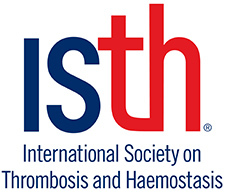World Thrombosis Day Campaign Activates Global Awareness Efforts on Evidence-Based Prevention of Blood Clots for Ninth Consecutive Year
Award-Winning Global Campaign Heightens Efforts this Year to Share Patient and Survivor Stories to Highlight the Prevalence of Blood Clots—the Leading Cause of Preventable Deaths Worldwide
CHAPEL HILL, N.C., Oct. 13, 2022 /PRNewswire/ -- Today is World Thrombosis Day, a global awareness campaign led by the International Society on Thrombosis and Haemostasis (ISTH), recognized annually on October 13 to bring awareness to conditions caused by thrombosis, commonly known as a blood clot(s), that are responsible for one in four deaths worldwide.
Ahead of its 10th anniversary in 2023, the World Thrombosis Day campaign, with the tagline "Eyes Open to Thrombosis," is dedicated to spreading awareness of the signs, symptoms and risk factors of blood clots with the help of more than 3,000 partner organizations who organizing upwards of 10,000 awareness activities worldwide
Blood clots are the underlying cause of heart attacks, ischemic strokes and venous thromboembolism (VTE), the top three cardiovascular killers. VTE occurs when one or more blood clots form in a deep vein, most often in the leg (deep vein thrombosis, DVT), and can travel in the blood stream and lodge in the lungs (a condition known as pulmonary embolism, PE).
This year's global campaign offers enhanced efforts to share personal stories from patients and survivors who have experienced life-threatening VTE to spotlight the prevalence of this often-overlooked condition.
"Blood clots are often overlooked because their symptoms can resemble those of many other conditions," shared Professor Beverley Hunt, MD, OBE, Chair of the World Thrombosis Day Steering Committee. "It is absolutely crucial that both medical professionals and the general public are aware of the signs, symptoms and risk factors to ensure that blood clots are treated as soon as possible," she explained.
The following are the top focus areas for the World Thrombosis Day campaign this year as it shines a spotlight on the risk factors associated with VTE blood clots:
- Hospital Associated: Over 50 percent of VTE occur during or after hospital admission.
- Cancer Associated: Patients with cancer are four times more likely to develop a serious blood clot due to effects of the cancer, surgery and chemotherapy.
- Gender Associated: Men are more likely to develop blood clots than women, and when they have a clot, are more likely to get a recurrence than women. Women have periods in their lives where they are at increased risk, for example if they use the combined oral contraceptives or oral hormone replacement therapy and during pregnancy, and six weeks postpartum.
- Mental Health: Increased anxiety, depression and/or post-traumatic stress disorder (PTSD) are common following a physical diagnosis of a blood clot.
The World Thrombosis Day campaign calls upon healthcare professionals to take determined action, such as performing VTE risk assessments when individuals are admitted to hospital. The campaign further encourages the general public to request a VTE risk assessment when they are admitted to hospital.
World Thrombosis Day shares these key tips to help prevent blood clots:
- Know the signs and symptoms of a blood clot. Red flags to look for are unexplained leg pain, sometimes associated with tenderness, redness and/or swelling. Pulmonary embolism can cause shortness of breath, rapid breathing, chest pain and occasionally coughing up blood.
- Ask for a VTE risk assessment. All individuals, when admitted to hospital, should ask their healthcare professional for a VTE risk assessment, a questionnaire that gathers medical information to discern a patient's potential risk factors for developing a blood clot(s).
- Stay active and hydrated when undertaking long periods of desk working. Set an alarm for five minutes before every hour, and use that time to get up, walk around and stretch. Staying immobile for long periods of time can increase the risk of blood clots. Drink plenty of water to prevent dehydration, which can cause blood to thicken, resulting in blood clots.
"We encourage everyone across the globe to get involved in World Thrombosis Day to increase public awareness and education about blood clots," said Professor Flora Peyvandi, MD, ISTH President. "We want to thank Prof. Beverley Hunt (Chair) and the Steering Committee, a group of patients and renowned international medical experts in the fields of thrombosis, hemostasis, vascular and general internal medicine, and public health, for lending their time, expertise and guidance to help the campaign impact billions of people each year."
To learn more about blood clots and to participate in World Thrombosis Day, visit www.worldthrombosisday.org and follow #WTDay22 on social media.

WANT YOUR COMPANY'S NEWS FEATURED ON PRNEWSWIRE.COM?
Newsrooms &
Influencers
Digital Media
Outlets
Journalists
Opted In




Share this article